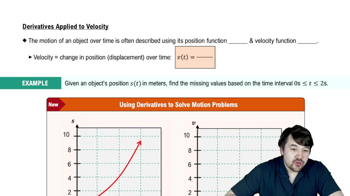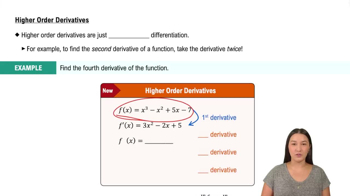Tangent Lines
In Exercises 35–38, graph the curves over the given intervals, together with their tangent lines at the given values of x. Label each curve and tangent line with its equation.
y = sin x, −3π/2 ≤ x ≤ 2π
x = −π, 0, 3π/2
 Verified step by step guidance
Verified step by step guidance Verified video answer for a similar problem:
Verified video answer for a similar problem:



 3:53m
3:53mMaster Derivatives of Sine & Cosine with a bite sized video explanation from Patrick
Start learning